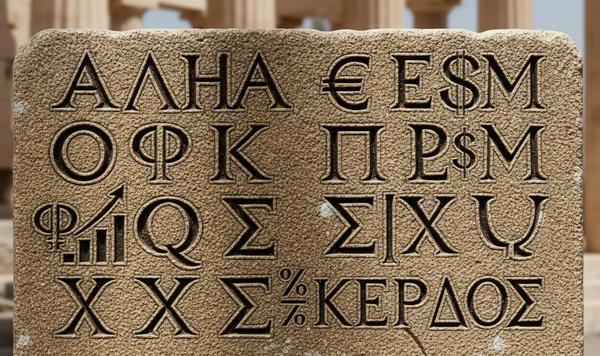The benefits of Exchange Traded Funds (ETFs): all you need to know

Are you looking to diversify your portfolio but not sure where to start? Exchange Traded Funds (ETFs) are a great way for novice and savvy investors alike to begin trading. With ETFs, you can easily access an array of asset classes without having to purchase thousands of individual stock shares. Not only that, these instruments offer more flexibility than other more traditional investments while providing increased transparency and lower costs. Whether you're new to the game or a seasoned investor, this blog post will discuss all the benefits of exchange traded funds so you can make the most out of your finances!
What is an Exchange Traded Fund (ETF)?
ETFs are a type of investment that trades like a stock but acts more like a mutual fund. Essentially, they are baskets of securities that are traded on an exchange and can include stocks, bonds, commodities or other investments. They are indexed rather than actively managed and the ownership of those assets is divided into shares, which are then sold to investors. Their value is based on the underlying net asset value of the stocks held in the index basket.
First introduced in 1990, the attention of investors to this financial product has spiked in the past years, thanks to the number of advantages they have over other types of investments. According to Statista, in 2022 there were almost 9 thousand ETFs in the world, up from 5 thousand just five years before.

Advantages of ETFs and why they are popular
ETFs have become increasingly popular in recent years due to the numerous benefits they offer investors. These include:
- Low costs: ETFs often have lower fees than other investments, making them a cost-effective way to diversify one’s portfolio.
- Liquidity: ETFs are tradable on major exchanges and can be bought and sold in the same way as stocks. This offers investors greater liquidity than other investments like mutual funds.
- Diversification: ETFs provide access to a wide range of asset classes, which can help reduce risk by diversifying one’s portfolio.
- Transparency: ETFs disclose their holdings regularly, which makes it easier for investors to understand where their money is being invested.
- Performance: Although some controversy still rumbles on, the majority of studies now conclude that actively managed funds on average underperform their passively managed counterparts.
The different types of ETFs
ETFs come in various types, with each offering different levels of risk and reward. There is practically no limit to the different combinations of investments that can be found in an ETF. Some of the most popular ETFs include:
- Index ETFs: these ETFs track a specific index such as the S&P 500 or Dow Jones Industrial Average.
- Bond ETFs: these track bonds such as government bonds, corporate bonds or other types of debt instruments.
- Sector ETFs: these ETFs are designed to track the performance of a specific sector or industry, such as energy or technology.
- Commodity ETFs: these track commodities such as oil, gold, silver and other metals.
- Inverse ETFs: these ETFs are used to bet against the market and can be used as a hedge against market volatility.
- Foreign market ETFs: these ETFs track foreign markets and are a great way for investors to gain exposure to international stocks.

And if this is not enough:
- Style ETFs: these ETFs track stocks with a specific style, such as value or growth
- Currency ETFs: these ETFs track a particular currency, such as the US dollar or Euro
- Real estate ETFs: these ETFs invest in real estate investment trusts (REITs).
- Sustainable ETFs: these ETFs invest in companies that follow sustainable practices.
This list represents just a small part of the options available. You can imagine that with 9 thousands ETFs available, there is definitely something that will satisfy your needs.
Common questions about investing in ETFs and their answers
Here below you can find the answers to some of the most common questions about ETFs:
Q. What is the minimum investment for ETFs?
A. Most ETFs have no minimum investment requirement, meaning you can start investing with as little as you choose.
Q. How often are ETFs traded?
A. ETFs are traded on exchanges and can be purchased or sold at any time during regular trading hours.
Q. Are ETFs risky?
A. All investments carry some degree of risk but ETFs are generally considered to be less risky than other forms of investing, due to the diversification they offer and their lower costs.
Q. What is the difference between ETFs and stocks?
A. ETFs are a type of investment that trades like a stock but acts more like a mutual fund. Stocks, on the other hand, represent ownership in a company. They can be riskier than ETFs since they are dependent on the performance and success of the underlying company. Also, unlike a company stock, the number of shares outstanding for an ETF is constantly evolving because of the continuous creation of new shares and redemption of existing ones.
Q. What is the difference between ETFs and Mutual funds?
A. ETFs and mutual funds are both professionally managed investments that provide diversification, but there are some key differences. ETFs trade on exchanges, meaning they can be bought or sold at any time during regular trading hours. Mutual funds, on the other hand, can only be purchased or sold once a day at the end of the trading day. The key difference though is fees. ETFs generally have lower fees than mutual funds, making them a more cost-effective option for investors.
Q. What is the difference between ETFs and Index funds?
A. With the term Index fund, it is normally intended index mutual funds. However, there are many ETFs that track indexes. The main difference is that ETFs trade on exchanges, while index funds do not. That means ETFs can be bought and sold in real-time, while index funds can only be purchased or sold once a day at the end of trading. ETFs also tend to have lower fees and more tax advantages, making them a preferred choice for many investors.
Q. What is the difference between ETFs and ETNs?
A. ETFs and Exchange Trade Notes (ETNs) are both exchange-traded investments, but there is a key difference between the two: ETFs hold actual assets or securities, while ETNs are debt instruments that promise to repay investors based on the performance of an underlying asset or index. ETFs tend to be more liquid than ETNs, making them a better option for investors who need access to their funds quickly. ETNs, however, are generally less expensive and have fewer tax implications than ETFs. ETNs are typically issued by investment banks. While they trade on an exchange in the same way as ETFs, they typically offer investors much less protection in the event of a default.
Q. What is the difference between ETFs and ETCs?
A. ETFs and Exchange Trade Commodities (ETCs) are similar in that they both trade on exchanges, but the underlying structure is different. ETFs track the performance of a basket of assets or securities, while ETCs track the price movement of an individual asset such as a commodity or currency. ETCs are ETNs (see previous question) that invests in the livestock, agriculture products, metals and energy markets. The commodity will usually be held in a vault with a custodian and thus the ETCs are backed by underlying assets. ETCs can be more convenient than holding a physical commodity directly.
Q. What is the difference between passive and active ETFs?
A. Passive ETFs are investments that track the performance of a specific index or benchmark, such as the S&P 500. Active ETFs, on the other hand, are managed by professional managers who actively select stocks in an effort to outperform their benchmarks. Passive ETFs tend to have lower fees and less volatility than active ETFs, making them a better choice for investors who are looking for low-cost, long-term investments. Active ETFs can be riskier and more expensive, but they may also provide higher returns if the underlying stocks outperform their benchmarks.
Q. Are ETFs closed ended funds?
A. ETFs are typically open-ended funds, meaning they issue new shares in response to investor demand. Closed-end funds, on the other hand, issue a fixed number of shares and trade on exchanges like stocks. Open-ended funds tend to be more liquid than closed-end funds since they can issue additional shares when needed. ETFs also tend to be more cost-effective than closed-end funds, making them a preferred option for many investors.
Tax benefits of investing in ETFs
One of the main advantages of investing in ETFs is the potential for tax savings. In some countries, including the US, dividends and capital gains from ETFs are taxed at a lower rate than those from other investments. This can help to reduce long-term taxes and increase after-tax returns. Additionally, because ETFs trade on an exchange, investors can take advantage of strategies such as tax-loss harvesting to further reduce their tax bill. Some countries may also offer special tax incentives for investing in ETFs or related funds, so it’s a good idea to check the specifics of your local regulations before making an investment decision.
How to choose the right ETF for you
Choosing the right ETF for your strategy can be tricky. However you could think of them as a wrapper around a pool of stocks or bonds, making them easier to buy and own than individual securities. This means that you could just ask yourself the same questions you would normally ask yourself when picking the single asset. Things like:
- Which geography do I want yo invest into? US? International? Emerging markets?
- Stocks? Bonds? Commodities? Currencies? Alternative investments?
- What is your risk tolerance? Do you prefer safety over return?
- What are the fees?
- What is the liquidity?
There are ETFs that satisfy pretty much any of your needs, so make sure to do thorough research on them before making a decision. A good way to find what suit best your needs is to use an ETF database or ETF screener.

There is plenty of screeners out there and most likely the platform you are using for your investments already has some. However if you want to try something else, Yahoo finance, ETF database or ETF.com are good options.

If you live in Europe a good ETF screener is Just ETF. Once you've selected the country on the top left of the page, the screener will filter out ETFs that are not accessible in your country. You can then proceed by using the filters on the left pane.

Analyze the performance of an ETF before making an investment decision
Assuming you have taken your first pass at choosing the criteria of your ETFs (e.g. and ETF that targets stocks, large cap, Europe etc.), it's now time to select the one(s) you will invest into. While the screeners mentioned can help you find ETFs that match your criteria and preferences, it's important that you also analyze the candidates more in depth before making the finance choice.
Regardless of the preference you might have for fundamental or technical analysis, the bare minimum key factors you should look at are:
- Price: if it has been trending upwards it's normally a good sign. But if for some market conditions the price is below its 52-week range, then you might be up for a bargain. That is if you are investing (long term) and not speculating (short term).

- Volume: this indicates how much of the ETF is being traded. Generally, higher volume suggests more liquidity which is a good thing because if at any given time you want to sell it, you'll have enough demand in the market.
- Yield: the yield shows you how much return the ETF is providing in terms of dividend or coupon interest income. Some ETFs don't pay dividends but reinvest them back into the fund. This helps the fund's growth and avoid you paying gain taxes until you sell the ETF.
- Beta: the beta coefficient of an ETF reveals how much the ETF's price moves in comparison to the market as a whole. A beta greater than 1 indicates that the ETF has been more volatile than the overall market while a beta lower than one suggests that it is less volatile. This works in both directions: a lower beta will be more defensive and in case of a market crash it will retain more value. At the same time if the market was to have a run, the same ETF will not gain as much at the market. The beta coefficient is sort of irrelevant if the ETF mirrors a specific (big) index, because the returns of both should be similar in that case. Things differ if the ETF mirrors a very niche set of assets/companies.
- Expense ratio: this is the cost of running the ETF. It ranges from 0.05% to upwards of 2%. This means you are be directly affected by it in terms of returns, higher expense ratio translates into lower returns for you as an investor. One of the key benefits of ETFs is low expense ratios therefore try to avoid spending more than 0.5%.
- Inception date: this is the date when the ETF was born. It's important that you pay attention to it so that you don't end up investing in an ETF with a short track record.
- Top holdings and sectors: this will tell you what the fund owns. For example if you are looking to buy an ETF that tracks US companies, check out which stocks represent a large portion of the ETF's holdings and make sure those match your expectations. The same thing goes for the sectors; if you want to be heavy on Information technology rather than real estate, make sure yo check what the ETF is exposed to.

- Fund summary: this is a good place to look for additional information about the ETF's strategy and focus. If available, you should also check out the fund manager's commentary on how they are managing the ETF.
- Annual total return: this will show you how the ETF has performed over time and in what circumstances. This is a great metric to assess the stability of an ETF.
- Morningstar style box: this will give you an indication of the fund's size component as well as its value/growth bias. This can help you understand how aggressive or conservative is the ETF and if it fits into your portfolio.

All of the above should also be compared to the category average. But where can you find all of those things?
- Your investment platform: most likely all of the above can be found where you are buying the ETFs.
- The website of the ETF management company: Vanguard, BlackRock, Fidelity, etc.
- Finance related websites: there are many valid options out there such as Yahoo finance or ETF.com but eventually it goes down to your preference.
Conclusions
ETFs are a great way to invest as they offer low expense ratios and can provide diversification for your portfolio. When selecting an ETF, remember that they are basically a wrapper around underlying assets hence you should think about what assets and strategy you want to follow.





